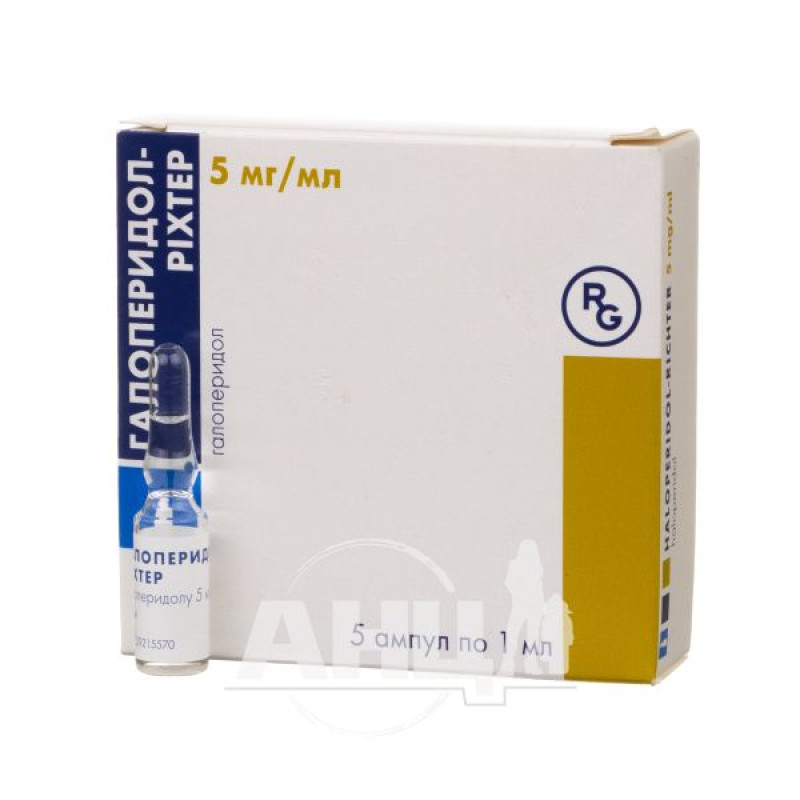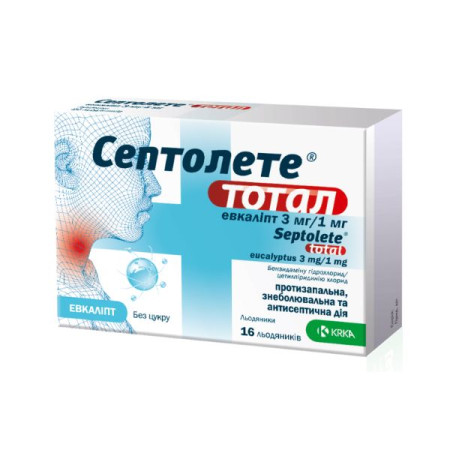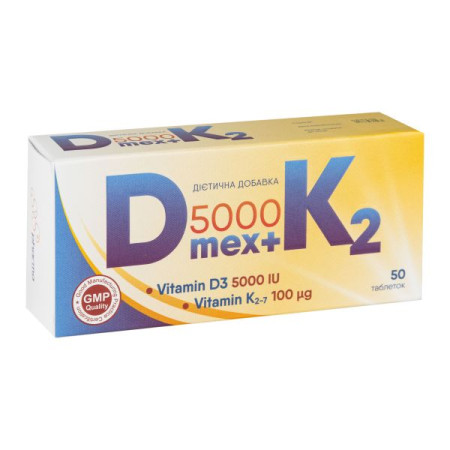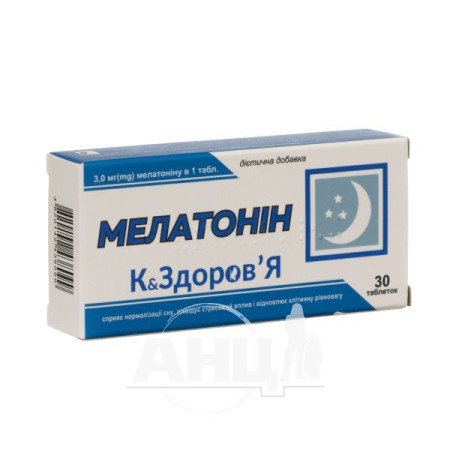Haloperidol-Richter solution for injection 5 mg ampoule 1 ml No. 5
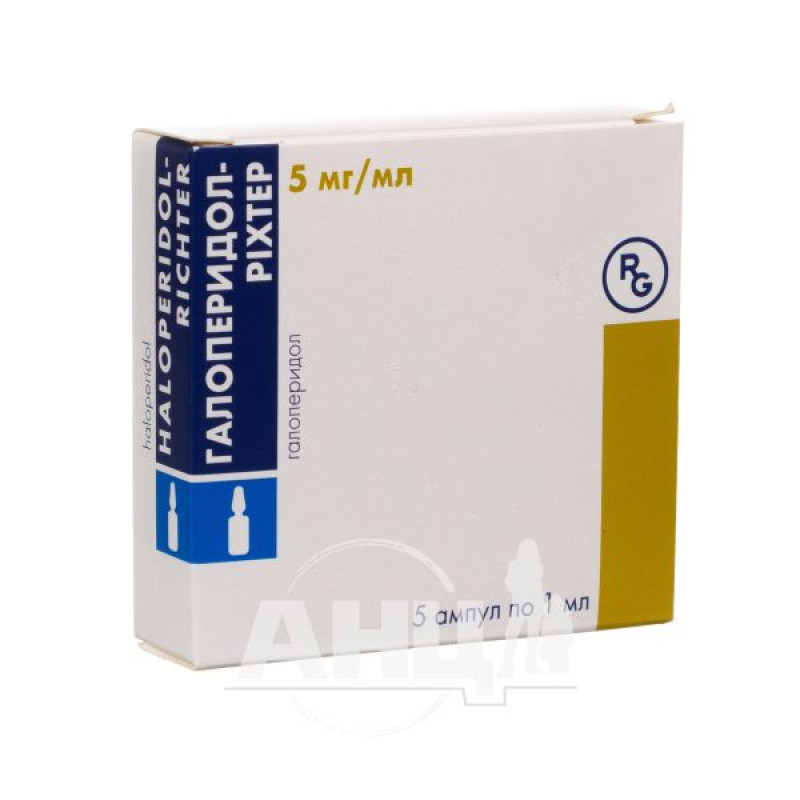
Haloperidol-Richter injection solution is used for the following indications in adults:
rapid relief of severe acute psychomotor agitation associated with psychosomatic disorders or manic episodes of bipolar I disorder, in case of ineffectiveness of oral therapy; emergency treatment of delirium in case of ineffectiveness of non-pharmacological methods; treatment of Huntington's chorea of mild to moderate severity, when other drugs are ineffective or poorly tolerated, and oral therapy is not suitable; prevention of postoperative nausea and vomiting in patients at moderate and high risk, as monotherapy or as part of combination therapy, when other drugs are ineffective or poorly tolerated; combination therapy of postoperative nausea and vomiting, when other drugs are ineffective or poorly tolerated.Composition
The active substance is haloperidol (1 ml of solution contains 5 mg haloperidol).
Excipients: lactic acid, water for injections.
Contraindication
Hypersensitivity to the active substance or to any of the excipients; coma; central nervous system (CNS) depression; Parkinson's disease; dementia with Lewy bodies; progressive supranuclear palsy; history of QTc prolongation or congenital long QT syndrome; recent acute myocardial infarction; decompensated heart failure; history of ventricular arrhythmia or torsades de pointes; uncompensated hypokalemia; concomitant use of a drug that causes QT prolongation.Method of application
"Haloperidol-Richter", solution for injection, is intended for injection only.
It is recommended to start treatment with a low dose. The dose is then adjusted based on the patient's response to determine the minimum effective dose.
Dosage recommendations for adult patients (over 18 years of age)
Rapid relief of severe acute psychomotor agitation associated with psychosomatic disorders or manic episodes of bipolar I disorder, in case of ineffectiveness of oral therapy: 5 mg intramuscularly, can be repeated every hour until symptoms are controlled. In most patients, a sufficient effect is achieved at a dose of up to 15 mg/day. The maximum daily dose is 20 mg. The need for longer use of the drug "Haloperidol-Richter" should be assessed at an early stage of treatment. The use of the drug "Haloperidol-Richter", solution for injection should be discontinued as soon as there are clinical indications for this. If further treatment is required, it is necessary to start taking haloperidol in tablets at the same dose (dose conversion ratio 1: 1) with subsequent dose adjustment according to clinical response.
Emergency treatment of delirium in case of ineffectiveness of non-pharmacological methods: 1-10 mg intramuscularly. Treatment should be started with the lowest possible dose. If the disorder persists, the dose should be increased at intervals of 2 to 4 hours, until a maximum dose of 10 mg/day is reached.
Treatment of mild to moderate Huntington's chorea when other medications are ineffective or poorly tolerated and oral therapy is not suitable: 2-5 mg intramuscularly, may be repeated hourly until symptoms are controlled or until a maximum daily dose of 10 mg is reached.
Prevention of postoperative nausea and vomiting in patients at moderate to high risk, as monotherapy or as part of combination therapy when other drugs are ineffective or poorly tolerated: 1-2 mg intramuscularly at induction or 30 minutes before the end of anesthesia.
Combination therapy for postoperative nausea and vomiting when other drugs are ineffective or poorly tolerated: 1-2 mg intramuscularly.
Discontinuation of therapy: It is recommended to gradually reduce the dose of haloperidol.
Application features
Pregnant women
As a precautionary measure, it is recommended to avoid the use of Haloperidol-Richter during pregnancy.
Haloperidol passes into breast milk. A decision on whether to discontinue breast-feeding or to discontinue therapy with Haloperidol-Richter should be made taking into account the benefit of breast-feeding for the child and the benefit of therapy for the woman.
Haloperidol increases prolactin levels. Hyperprolactinemia can inhibit the synthesis of gonadotropin-releasing hormone (GnRH) in the hypothalamus, which leads to a decrease in the secretion of gonadotropins in the pituitary gland. This leads to impaired reproductive function by inhibiting the synthesis of sex steroids in the gonads of both men and women.
Children
The safety and efficacy of Haloperidol-Richter, solution for injection, in children and adolescents (under 18 years of age) have not been established. Data are not available.
Drivers
"Haloperidol-Richter" has a moderate influence on the ability to drive and use machines. Sedation or impaired concentration may occur to some extent, especially at high doses and at the beginning of treatment. These effects may be exacerbated by alcohol. Patients should be advised to refrain from driving or operating machinery during treatment until their response to the drug is known.
Overdose
Overdose of haloperidol is manifested by an increase in the known pharmacological and side effects. The most pronounced symptoms are: severe extrapyramidal reactions, arterial hypotension and sedation. Extrapyramidal reactions are manifested by rigidity and generalized or local tremor. Along with arterial hypotension, the development of arterial hypertension is also possible.
In extreme cases, a comatose state with respiratory depression and hypotension, which can be quite severe, with the development of a shock-like state, is possible.
The risk of ventricular arrhythmias, possibly associated with QTc prolongation, should be considered.
Treatment
There is no specific antidote. Supportive therapy is indicated. The effectiveness of activated charcoal has not been established. Dialysis is not recommended in the treatment of overdose, as very little haloperidol is removed during dialysis.
Side effects
The safety of haloperidol was evaluated in 284 patients treated with haloperidol in 3 placebo-controlled trials and in 1295 patients treated with haloperidol in 16 double-blind active comparator clinical trials. In the pooled safety data from these clinical trials, the most frequently reported adverse reactions were: extrapyramidal disorders (34%), insomnia (19%), agitation (15%), hyperkinesia (13%), headache (12%), psychiatric disorders (9%), depression (8%), weight gain (8%), tremor (8%), hypertonia (7%), orthostatic hypotension (7%), dystonia (6%), and somnolence (5%).
Storage conditions
Store in the original packaging to protect from light at a temperature not exceeding 30 °C, out of the reach of children.
Shelf life - 5 years.
There are no reviews for this product.
There are no reviews for this product, be the first to leave your review.
No questions about this product, be the first and ask your question.






